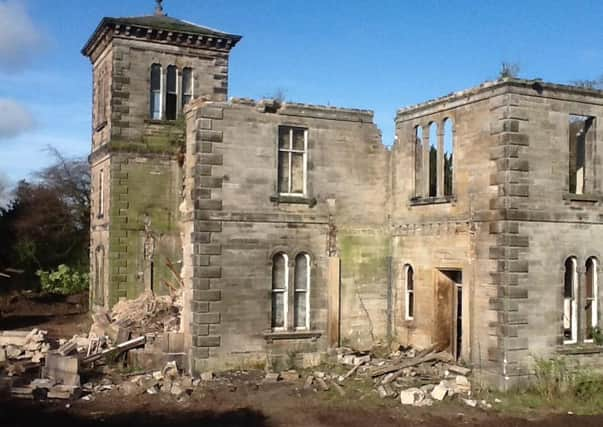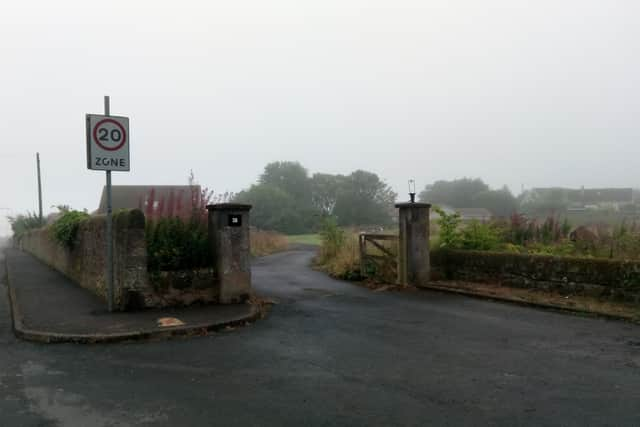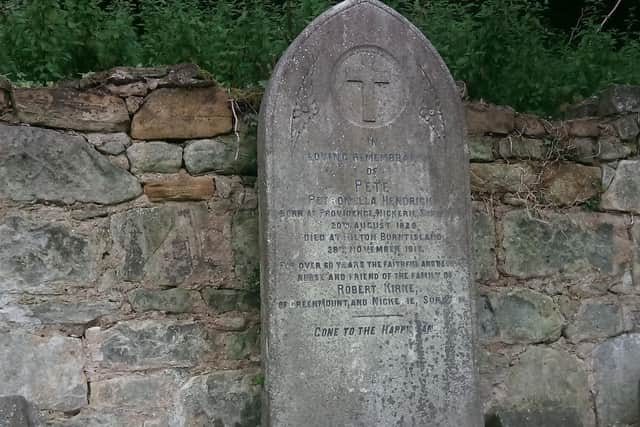Remembering the girl born a slave who lived free in Fife


It may come as a surprise then, that so many of the street names across Fife have connections with history that today may make us uncomfortable.
Scotland’s connection with the slave trade is well-documented, and Fife is no different.
In Burntisland a few streets hint at such history.


Advertisement
Hide AdAdvertisement
Hide AdLooking into the Greenmount area provides a fascinating insight into the little-known story of a woman thought to be one of the last people born as a British-owned slave to have lived in Scotland.
The history surrounding Petronella Hendrick – known locally as Pete – is a story few may have heard.
But with International Day for the Remembrance of the Slave Trade and its Abolition falling on this Sunday (August 23), it provides the perfect occasion to delve into the past.
While Britain abolished Slavery in 1834, where Pete was born in Suriname, South America, slavery continued for another 30 years.


Advertisement
Hide AdAdvertisement
Hide AdIn Suriname, plantation owner Robert Kirk received special permission to ‘free’ Pete so she could travel with his family back to Scotland in 1852.
Robert and his wife had a daughter called Kate and Pete was the child’s nurse as they settled in Burntisland at a large house named Greenmount.
She worked as a ‘free’ servant of the Kirks, she attended Erskine United Free Church, and was highly respected locally.
She regularly took the children to enjoy the beach, always smiled, was known to have a sweet singing voice, and spoke with a strong Fife accent.
Advertisement
Hide AdAdvertisement
Hide AdAs she grew older, her hair became a distinctive white, and she decorated it with a red bow.
When the children grew up, Pete was then offered passage back to South America, however she refused, saying she did not want to leave “her family”.
The historical importance of Pete’s life in Burntisland has occasionally been highlighted locally, but there are those who now believe that she should be remembered with a plaque.
Gael Finlayson is among the growing number of people in town who want to see it happen – she only learned about Petronella’s existence while trying to educate her children about slavery and the Black Lives Matter protests which have featured so prominently on the news.
Advertisement
Hide AdAdvertisement
Hide AdGael became fascinated by the history which had taken place on her own doorstep as she continued to research Pete’s life.
“I had no idea about it all until my friend told me,” she said “People were taking down statues and things like that and it was in the news.
“My children wanted to know why they were doing that so I explained about how these people depicted in the statues owned slaves.
“When talking to my friend about it she told me about Petronella.
Advertisement
Hide AdAdvertisement
Hide Ad“I started looking into it and emailing people. The libraries were really helpful, and some academics were too.
“I really did it originally for the kids. I just wanted to educate them.
“It was trying to find a way of telling them about slavery but making it relatable to their home, that even Burntisland had a lady who had been a slave and was freed.
“She’s fascinating. I didn’t realise that Burntisland had such links to other places like that. I’m still finding out information.
Advertisement
Hide AdAdvertisement
Hide Ad“What we really want is for a plaque to be erected to acknowledge the fact that Petronella was born a slave in Suriname and lived here.”
Sarah Prasad also strongly believes that there should be a plaque to remember Pete, to help educate future generations
She said: “She was with the family for 60 years, brought as a slave from South America to look after the children.
“I want to change the curriculum in Scotland, to teach children the unadulterated history of Britain, with all its blemishes, and also teaching kids equality, diversity, and inclusion.
Advertisement
Hide AdAdvertisement
Hide Ad“We have to leave our kids a better legacy around these issues.”
When Pete died in 1917 at age 89, her obituary featured in the Fifeshire Advertiser.
Despite the report using outdated language that we would find offensive today in describing her race, the text was filled with warmth, noting that ”she was as well-known as she was respected”.
It read: “She was clever and resourceful, both with her head and her hands.
“A most skilful worker at needlework.
Advertisement
Hide AdAdvertisement
Hide Ad“Pete’s gifts as a songstress were such that she must have gained distinction as a sweet singer of song, and in soothing those under her charge, she not only expressed this gift with sweetness and expression but demonstrated the kindliness and affection of her nature.”
The obituary went on to note that during her long service with the Kirks, Pete was regarded more as a friend than a servant.
Pete was buried nearby, and her grave can be found at the back wall of Burntisland Cemetery.
Meanwhile, Greenmount house was demolished in 2010, having gone through use as a hotel and eventually being left as an empty shell following a fire.
Advertisement
Hide AdAdvertisement
Hide AdThe former coaching stables, the last remaining part of the property, are still standing today on Kirkbank Road - now houses.
The area still has several streets which bear the name Greenmount, in reference to the former home of the plantation owner.
It seems that in this way the slave owner will always be remembered, so would it really be too much to ask that Petronella Hendrick also have her name known with a plaque?